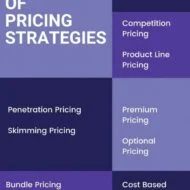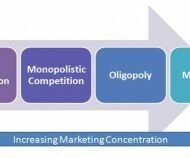Posted by Managementguru in Business Management, Marketing, Principles of Management
on Mar 4th, 2014 | 0 comments

Price Discrimination is nothing but a pricing strategy that charges customers different prices for the same product or service. Price discrimination is adopted by most of the firms in order to group their customers into different segments and fix different prices for each segment for identical products and services. This helps them to increase their revenue as well to cater to the needs of different customer groups. The negative aspect of this exercise is increased administrative costs in segmenting the markets and some people end up paying higher costs. But it has to be remembered that by discriminating prices, firms are able to cut through and exploit all layers of the market, helping them to expand. Elasticity of Demand Price discrimination can be practiced by a firm only which has some control over the price. Backgroung Image Source: Image by Gerd Altmann from Pixabay Obviously a price taker cannot indulge himself in price discrimination. It must be possible to group different markets in terms of price elasticity of demand. Suppose a firm identifies two potential markets, fixes high price for one market and low for another, caution is the key word in that, both the markets should be separable. Otherwise there is the danger of purchasing a product in one market for a lower price and the same being resold in another at a higher price. It might damage the market reputation of the firm as well. Skimming the Profit The process of price discrimination is followed by most of the firms existing in monopolistic and oligopolistic markets, where there is a necessity to exploit potential customers at the earliest in order to skim the profit. Premium customers are targeted first, followed by middle income group and then lower income group. Recent marketing strategies allow middle and lower income group to enjoy all the material comforts and luxuries available for the premium class, by arranging for loans to be settled in equated monthly installments over a period of time. The firms are also engaged in associating themselves with financial institutions and banks, which proves to be a win-win situation for both. Following are some examples cited for your understanding about price discrimination: In legal and medical professions, charging of lower fees to the low income than to high income group.Charging of lower prices abroad than at home for a variety of products and services ranging from books and medicines to movies.Charging of lower prices for elders and children in public transportation and airlines.Charging of lower hotel rates for conventions and meetings.Electronic industry, where the price set initially is high and then it falls down gradually. Firms believe that by offering different prices to different customer groups, can retain the customers and prevent them from switching over to another supplier. Travel agencies offer fanciful package tours with attractive and competent prices that are irresistible. Such is the power of marketing when presented in the right mix targeting the right customers at the right...

Posted by Managementguru in Business Management, Marketing, Principles of Management
on Mar 4th, 2014 | 0 comments

Market Structure and Pricing Decisions- An overview What is Market Structure: It is the makeup of a particular market like different characteristics, size, value, number of providers etc. Business markets are always dynamic in nature and influenced by the number and size of potential buyers and sellers, which in turn affects the pricing of a product. If the price is set too high, say, in a homogeneous market, the firm will not be able to survive and compete with other suppliers in the market. If the price is too low, it will not be sufficient enough to cover the profit margin. If you are a monopoly player, then you are the price maker and the price you fix goes unchallenged. First let us have a glimpse on different kinds of market structure and their effect on determining the price. Four different market structures are identified. Perfect Competition Consists of huge number of buyers and sellers, each too small to affect the price of the product-sellers are “price takers and not price makers.” Homogenous products Easy entry and exit to and from the market Agents have perfect knowledge about market conditions. Here, the product is totally undifferentiated and the sellers always sell their product at market determined prices. Otherwise, they fail to attract their customers. Price cutting becomes unnecessary as producers can sell their total output at market price. Online Marketing Monopoly Only one seller in the market Factors prevail that stops other firms from entering into the market, such as, exclusive government license, access to natural resources, patent holding, being a pioneer in the field etc., The product is highly differentiated from other goods There must be no good substitutes Monopolistic Competition Has elements of both monopoly and perfect competition Resembles monopoly in that, product of individual firms are slightly differentiated from others and does not serve as a perfect substitute Resembles perfect competition, in the sense that, there are a large number of sellers and the action of one does not have any effect on the other The difference lies in the fact that sellers have some control over price fixing as some customers might be willing to pay a slightly higher price if the products are differentiated from the competitors. Oligopoly Involves unspecified number of buyers Only a small number of sellers exist The actions of each firm affect the other sellers in an oligopoly market Products are homogenous or differentiated To persist in the long run an oligopoly firm has to do something that prevents the entry of new firms into the market, either in the form of product differentiation or clever advertising. Price cutting or increase affects the sales of other firms too and so the sellers must be cautious of this interdependent characteristic of the market structure. Social Media Marketing A clear idea and analysis of the market structure in which the firm operates, target customers, size of the firm and knowledge about competitor strategy as well as general trend of the market is helpful in formulating appropriate strategies regarding pricing and promotion of your...




